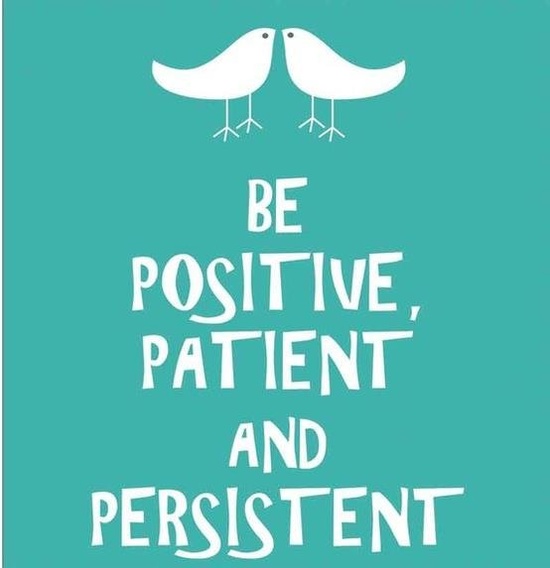Cindy Hooks Morrison, M.S., CCC-SLP, CLC
We’ve all heard about “terrible twos.” It’s the time in our children’s lives when their thinking and their wish to make independent choices naturally surpasses their speech and language development. Instead of giving us words, they give us tears and tantrums. And while this time is equally frustrating for the child and the loving parent — its 100% normal.
I can not speak for what will happen with my second born, but will say that I always felt very lucky that my first born son, Benjamin, was a terrific, two-year-old. I had truly thought that I missed the “terrible” stage completely because he was able to express his wants and needs so early. As an occupational hazard, it was impossible for me to play without teaching speech and language at the same time. So he was happy, I was happy and the second year of his life was pure bliss for us both!
Then my smart, beautiful, strong-willed son turned three.
Age three took me by complete surprise, because my formerly sweet, little, agreeable angel became the Mayor of Sassy Town. New, favored phrases entered our home and suddenly I was ducking tiny, speech and language bombs of “no”, “I don’t want to”, “I don’t like ____” and “I’m frustated.” Phew! Who is this child?
I knew that I could certainly justify and make excuses for the new way he was choosing to express himself. You see, we had moved into a new house in a new state one month before he turned three. And two weeks after he turned three, he got a brand new baby brother. If you add those two enormous changes to a new school, new friends, new babysitter, new stores, new seasons, new church…basically a whole new world to a three year old…anyone could see “why” he was acting out.
While there were legitimate reasons why he was acting out, I didn’t want to do him the disservice of justifying or making excuses for his behavior. I know that the most important lesson that I can ever pass on to my child(ren) is that life changes and we have to adapt to it. Sometimes it’s big changes like the ones above and sometimes it’s simple changes like a canceled play date, running out of their favorite food, not being able to pick out a toy from the store each time we go, accepting that friends might like to play with toys in a different way or the pool being closed due to rain.
We can’t control everything that happens in life and it will be that way for our entire lifetime. Teaching my son that rules of behavior are expected to stay the course while things in life change ultimately gives him skills to adapt to any situation. This can be a challenging task for little ones when their cognitive ability to see the big picture hasn’t fully developed yet, but it is an important skill to learn. Quite honestly, this can be an ongoing life-long lesson even for us moms.
I manage child behavior for a living during my therapy sessions, but when it came time to manage my own child’s behavior, the very first thing that I did was call my sister. I did this, because even if you have the best clinical knowledge and you know exactly what to do, parenting has its tough moments and the true gift of staying the course to raise happy, healthy kids is having a support system. You need to be able to talk, to laugh and to express your frustrations. Whether it be to a sister, a brother or a friend, there is nothing like finding another mom that you know you can call and talk to openly for support — no matter what direction you choose to go in with your own parenting.
The call to my sister was refreshing. She related to what I was going through and made me laugh by sharing stories of her own parenting experiences. You know you are speaking to someone who knows the challenging moments of raising children when you hear them state, “when my husband returned home from work i’d tell him to go feel the time out chair that was still warm, because our sons bottom had practically been on it all day long!” Of course she was exaggerating and laughing in hindsight, but the take home point was that managing behavior can be challenging and all moms do it.
I hung up recharged.
I stopped looking at the situation as a mom for a minute and I looked at it clinically instead. There are endless resources for learning more about the Positive Parenting Theory, but the basics of this idea are simply to reward and point out the best, positive behaviors rather than disciplining for the negative ones. If we only give a consequence for the negative behaviors and the positive behaviors go unnoticed then we aren’t reinforcing what we actually want to happen. We are putting too much of our energy focusing on what we don’t want to happen. This frustrates us and it frustrates our children too.
One thing that well-trained therapists do, at the very first session, is introduce behavioral management through play. Token reinforcement gives a reward for good behaviors, for participating with and listening to the therapist. Initially, many children need a reward for every task. Once children are rewarded consistently for positive behaviors they keep making positive behavior choices. Gradually the rewards are faded and once the behavior is managed the therapist now holds the child’s attention and sets to work on the next goals of learning speech, language or feeding. This systems happens quickly and efficiently in the clinical setting. In effort to teach my son to keep positive behavior when life changes, I apply this same system at home.
Here’s how our positive behavior system works:
I created a positive behavior chart using pictures instead of words. The pictures serve as visual reminders for my son every time he passes the chart. The chart is held by magnets on the refrigerator at my son’s eye level and I have a big, variety of stickers residing on top.
My son was shown the chart and he was simply told that he had two jobs to do for our family. He has to 1) do good listening (follow directions) and he has 2) to speak kindly (using good manners and a nice tone). The chart has only these two simple tasks, because they are easy for him to remember and they are all encompassing for me. When I witness these positive behaviors, I pick out a sticker that he gets to place on his chart. When he gets ten stickers he receives a prize.
We have a prize bin in our hall closet which is loaded with dollar store gems, but a toy is not the only reward I give. I also give the reward of extra reading time with mommy, special indoor activities, like indoor lunchtime picnics (a huge thrill at our house), a new movie, a special requested outdoor activity, playing “special” board games that are on reserve as good behavior prizes only, a few extra minutes downstairs before bedtime and getting to bake and enjoy special treats with mom.
The first few days I made sure that my son reached 10 stickers relatively quickly so he would learn the new system. Three days later, my sweet, little boy stepped back into light. And though i’ve used this method successfully at work thousands of times during half hour treatment sessions, there is something rather miraculous watching it work in your home 24 hours a day, seven days a week.
The result at our home is a happier child and a happier mom.
I have not seen the Mayor of Sassy Town in quite some time, but when a glimpse of him resurfaces my very first thought is, “have I spent enough time rewarding the positive behaviors that I want to see?” Usually that question gets me the answer that I need.
I have happily shared this chart with countless friends and have been so happy for them when they share that it has helped their family. Now that summer time is here, I thought it was time to share it with the blog. I am personally loving the more laid back schedule that Summer is offering to our family. But as our family’s routine changed up, I was very glad that we had a system in place to reward the positive behaviors that were still shining through during the adjustment.
I’ve included our chart in the link below:





Thanks for sharing. I’ve found that when you are really struggling, that it helps to start positive praising any little thing in very short increments starting with every 30 seconds (on horrible days with my kiddo – I have even praised that her “eyes were nice and opened to pay attention to mommy’s directions” – as sometimes that’s all I could find)
Absolutely, Jax! In the beginning it is so important to find anything positive to praise for in order for them to understand the shift in the change in your behavior! It will take a short amount of time for them to understand that you are now focused on looking for good behaviors and not waiting for the bad ones. Once they understand, you can naturally increase the time and step up the praise requirement to talking sweetly, using good manners, good listen or good completing a task, etc.. You’ve got it!